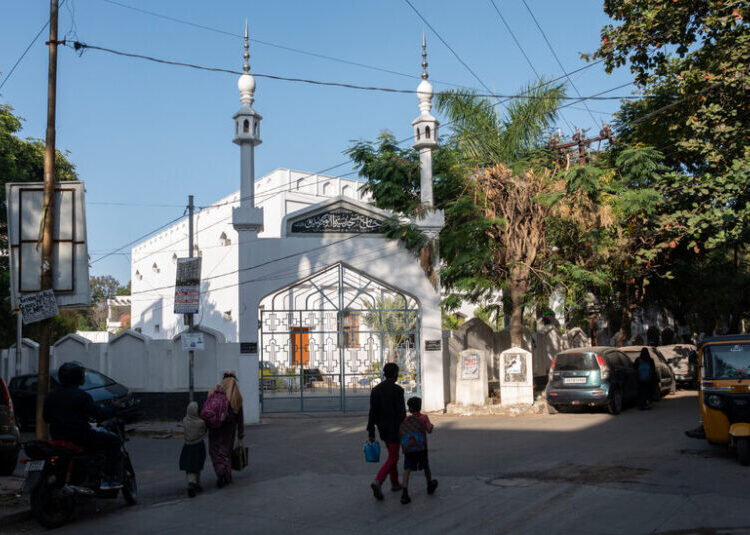At the annual United Nations climate conference in Belém, Brazil, this month, Gov. Gavin Newsom of California, the most prominent American in attendance, made some unexpected comments about nuclear power. In one interview, he noted that nuclear energy has gone from being a contested energy source to a key to America’s “low-carbon green growth strategy.”
That’s certainly true in New York State and for companies like Google that are hoping to build nuclear power plants so they can transition off fossil fuels.
But in Mr. Newsom’s state it is still effectively illegal to build nuclear plants. In 1976, when the antinuclear movement was gaining ground, California passed a law prohibiting the permitting of new nuclear facilities until the federal government found a permanent solution to the waste they produce. The law was one of the first of its kind: In total, 15 other states eventually banned or restricted the construction of nuclear plants. Nine of those states — nearly all blue — still have statewide moratoriums in place.
It’s time to revisit them. Nuclear power has gone from widely shunned to more widely embraced because it has something for everyone, whether you’re a climate pragmatist, a pro-growth abundance enthusiast or seeking, in the Trump administration’s parlance, “energy dominance.” The states that are still blocking new plants should acknowledge that it will be difficult to eliminate greenhouse gases without some role for nuclear, and should consider changing their laws.
California is perhaps the best example of why new nuclear projects should be allowed to compete against other energy sources.
When the state jumped into the fight against climate change, it passed landmark laws, including one, in 2018, committing California to get all of its electricity from carbon-free sources by 2045. That year, state regulators approved a plan to close California’s last operational nuclear plant. The vision embodied an environmentalist dream to run California on essentially sun, wind and water — and to show how other states and nations could do the same.
By several metrics, that dream is getting closer to reality: The costs of solar and batteries have plummeted, and California has deployed them at a breakneck pace. This year, through October, clean energy met or exceeded demand for a portion of the day on at least 259 days on the grid that serves most of the state.
But some scientists and energy experts have doubted the wisdom of running the state on sun, wind, water and batteries alone. In 2021, a group of them argued that “clean firm” (that is, not weather-dependent) sources of power, such as nuclear and geothermal, could complement those more variable resources. The next year, Mr. Newsom and the State Legislature decided to extend the life of the state’s only remaining nuclear plant, Diablo Canyon, until at least 2030. New reactors, however, are not on the horizon. A recent state bill would have exempted small modular reactors from the moratorium, but it failed.
When I was writing this on a rainy afternoon in Southern California, about 10 percent of the electricity on the grid came from solar, 9 percent from nuclear, 13 percent from batteries and 43 percent from gas. Which means there’s still a long way to go to get to a grid that’s reliable all the time and free of fossil fuels — especially when the demand for electricity is rising.
It would be prudent to keep all low-carbon options on the table, including nuclear. Nuclear power offers certain advantages: It can provide steady, round-the-clock, low-carbon electricity on very little land. And while the United States has failed to establish a permanent repository for the waste, spent fuel has been securely stored at nuclear-reactor sites and other authorized storage sites around the country.
Critics worry about the timeline and cost of building plants, for good reason. In the United States, two new reactors in Georgia were completed years late and billions of dollars over budget. Small modular reactors are designed to be safer and lower cost, but they are still in the pipeline and have yet to prove that they can fulfill that promise.
Nuclear energy is far from a panacea. But it at least deserves to compete on a level playing field. After all, it already provides almost 20 percent of the nation’s total electricity and almost half of its low-carbon electricity. And there are legitimate concerns about the alternatives, too, including geothermal and batteries, to say nothing of fossil fuels. The state laws treat nuclear as singularly dangerous, but fossil fuels kill far more people.
California and the other eight states with statewide restrictions on nuclear energy have an opportunity to double down on their clean energy goals and show that they are achievable. (At least two of these states, Massachusetts and New Jersey, have recently indicated interest in pursuing advanced nuclear reactors, an emerging technology.) They should recognize that all energy sources come with trade-offs, and remove outdated legal barriers to nuclear power to meet the complex challenges of the century.
Rebecca Tuhus-Dubrow is the author of “Atomic Dreams: The New Nuclear Evangelists and the Fight for the Future of Energy.”
The Times is committed to publishing a diversity of letters to the editor. We’d like to hear what you think about this or any of our articles. Here are some tips. And here’s our email: [email protected].
Follow the New York Times Opinion section on Facebook, Instagram, TikTok, Bluesky, WhatsApp and Threads.
The post Give Nuclear Power Another Chance appeared first on New York Times.




